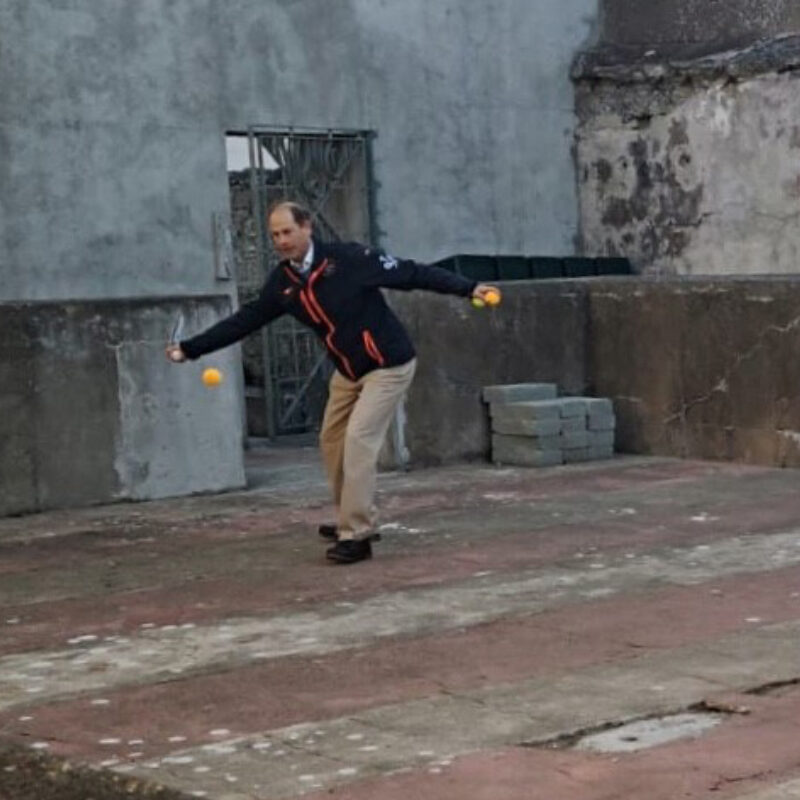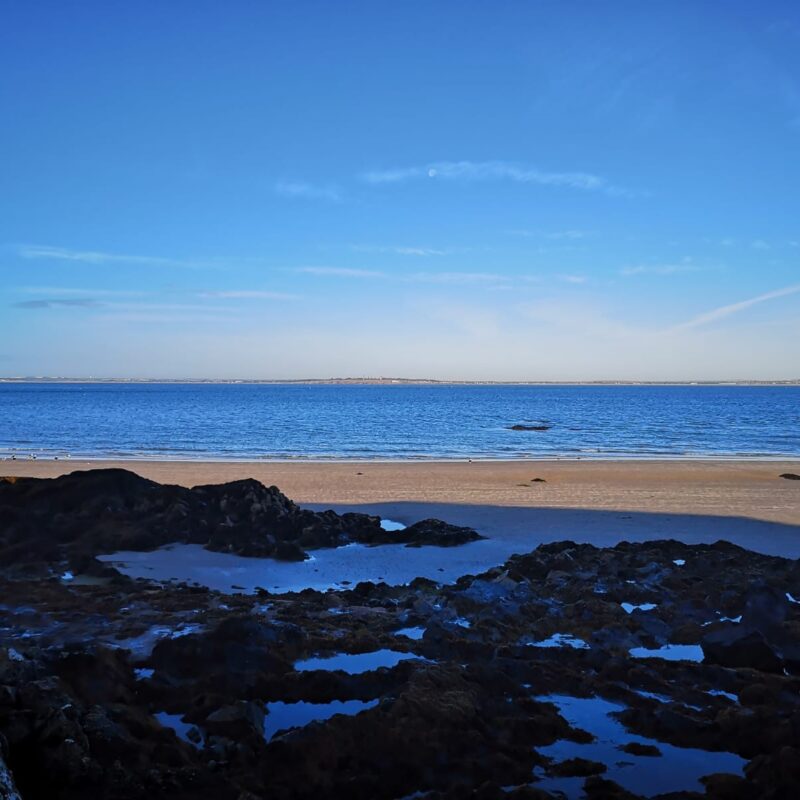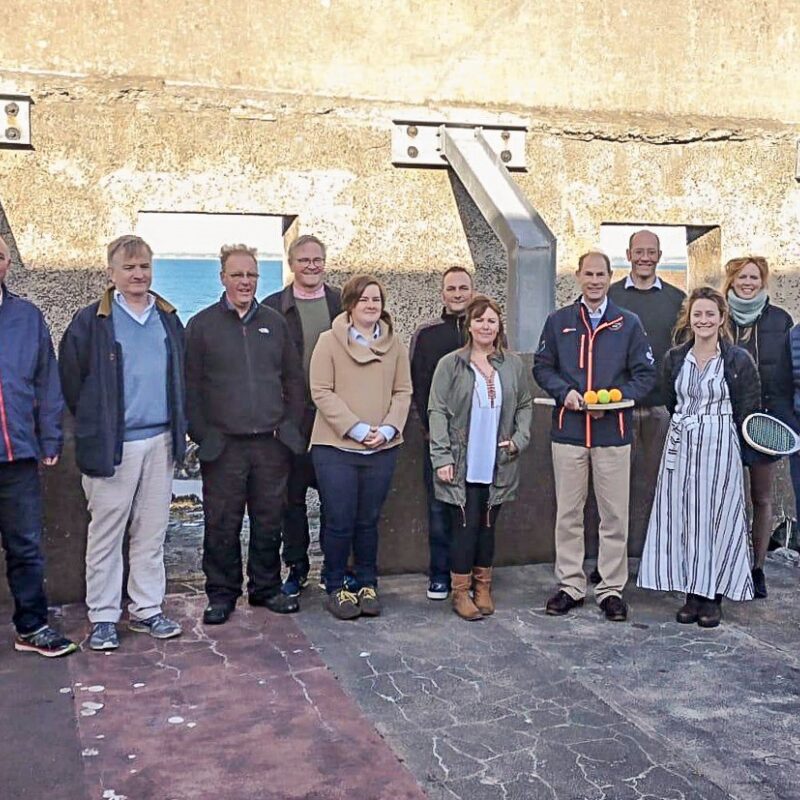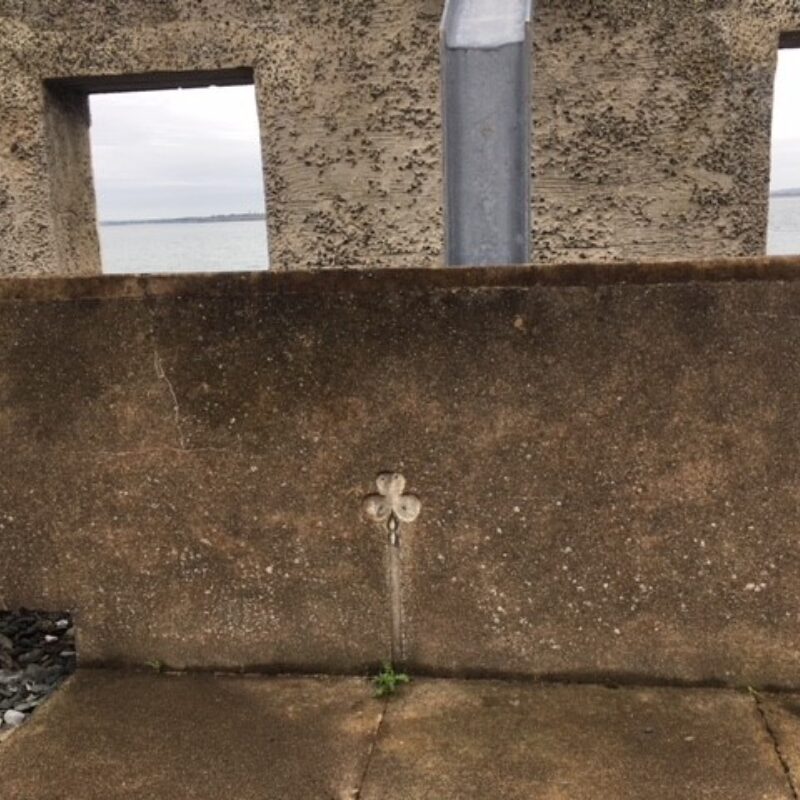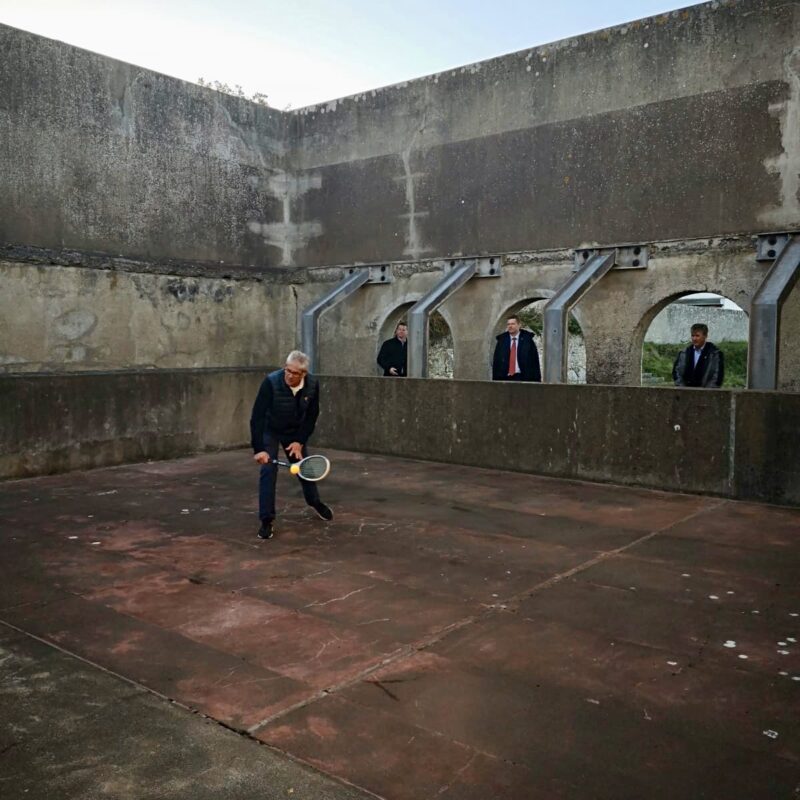HRH Real Tennis Tour 2018 Ireland
Court 42 – Lambay
This was an experience way beyond my expectations. Just getting to the Island is quite an exercise, but what an amazing and beautiful setting. Lambay Island is in the middle of Dublin Bay, just off Malahide. It has long been of strategic importance and hence the reason for its castle. It was the present owner, Alex Baring’s great grandfather who engaged a young up-and-coming Edwin Lutyens to turn this rather formidable Elizabethan fort into a home and to bring all the former coastguard cottages, farm and other buildings into more practical use. Perhaps the most surprising addition is the Tennis court.
The connection is perhaps worth mentioning: Cecil Baring was married to Maude Lorillard daughter of Pierre Lorillard who built Tuxedo Park! The court on Lambay is truly unique; it really is unlike any other court and difficult to describe, in part because in its current state one has to use a lot of imagination. Sadly all the woodwork has gone, which is perhaps not entirely surprising as it has no roof, so there are no Penthouses or Galleries. All that remains are the external walls and the internal ones to Gallery level. On three sides it has the traditional Penthouses, Dedans and presumably Back Wall, but as mentioned, even this wall is only to Gallery level. The Main Wall has a recess which accommodates a Penthouse and Galleries, which means there is a double Tambour, albeit from Penthouse level and above! From conjecture, because this wall is an outside wall and just a few feet from the sea the design is thought to be for strength.
How this all works in play remains for the moment a mystery. Jonathan Howell (currently Professional at the Royal Melbourne Tennis Club and one of my co-conspirators in setting up this whole Odyssey and Challenge) decided it had to be tried. Although we had a net this was going to have to be a floor game only. Without the Galleries and Penthouses the balls have plenty of escape routes, not just out of the playing area, but beyond. With various people strategically positioned in the archways and openings we launched into a knock-up. The floor is not in the best condition so the bounce could be pretty uneven; although very faded, it also has yards marked in bands, so alternate yards are painted in red. One of the nicest touches is that the chases are etched or carved in the walls, both numbers and shamrocks for the Galleries.
All being said and done, we did manage to have a few rests and only two balls escaped, one coming to rest in a rock pool. The floor did play all right as did the back walls, however for the sake of the racquets we were somewhat wary of playing anything too close to the side walls. However I can imagine that even the slightest cut would be devastating! Apparently this was the first time anyone has even tried to play on the court since 1994 and I sense that Alex and his cousins have been working very hard to get it even to this state. Probably because of the lack of any wooden surfaces, the sound the ball and racquets made was also unique, a really fascinating echo.
Although the weather was extraordinarily benign and the sun shone, I must confess that we didn’t quite experience the full Lambay tradition of plunging into the sea afterwards. That I will have to save for the day when I get to play a full game and when the tide is a little higher so that there isn’t such a long run down the sand. What the local seals will make of that revived tradition is anyone’s guess. All in all, this is a fascinating and historic court that’s crying out to be resurrected and I seriously hope that in the not too distant future we will be able to help Alex and his family realise their dreams.
Postscript: while in Dublin, I was able to visit the Iveagh Tennis Court on Earlsfort Terrace. Built by Edward Guinness, 1st Lord Iveagh, in 1886 it was given over to University College as part of the formation of their campus in 1908 and used as a sports hall. The University completed its move to the Belfield campus in 2007 since when the court has been unused and its future remains uncertain. The extensively glazed roof has obviously had some recent work done to it and is in good condition. The floor and walls are dressed with black limestone which I’m sure would give a unique playing surface, however the walls will need the paint removed and some of the floor will need replacing. All the internal walls, galleries and penthouses would need to be reinstated and some temporary structures at the Hazard end removed, but it’s entirely feasible. Some imagination is required when it comes to the surrounding structures and how these and indeed the court can serve the local and wider community for a wider benefit than just a few real tennis players. Who knows? Perhaps one day it will host another World Championship as it did in 1890between Tom Petit and Tom Saunders!
